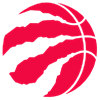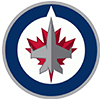It was beginning to appear that the Yankees acquisition of Juan Soto was going to be the only major trade of the offseason until the Orioles and Brewers hooked up with Corbin Burnes on the move to the AL East. Everyone agreed that the trade benefits Burnes in terms of home ballpark and run support. However, there was concern regarding the change of divisions from the perceived weaker NL Central to the supposedly stronger AL East.
Determining divisional strength is a slippery slope, since the rosters of the teams change every season. Not to mention, hitters don't face the pitchers on their own team, and vice versa. Even so, the aggregate ERA a team's hitters encountered, and the combined wOBA in the box against a team's pitchers can be determined.
ERA may be noisy for individual pitchers, but when you're looking at a team ERA, it's representative of the quality of the staff. It's not perfect, but wOBA (weighted on base average) is a good proxy for the quality of a player's, or team's offense. It is a souped up version of OBP where the components are all assigned a coefficient according to the run scoring matrix.
The methodology to quantify division strength is using each team's schedule and averaging the opponent's wOBA and ERA for all 162 games. When a team is at home, the road ERA of the opponent is the input. When the team is on the road, the home ERA of the host is used in
It was beginning to appear that the Yankees acquisition of Juan Soto was going to be the only major trade of the offseason until the Orioles and Brewers hooked up with Corbin Burnes on the move to the AL East. Everyone agreed that the trade benefits Burnes in terms of home ballpark and run support. However, there was concern regarding the change of divisions from the perceived weaker NL Central to the supposedly stronger AL East.
Determining divisional strength is a slippery slope, since the rosters of the teams change every season. Not to mention, hitters don't face the pitchers on their own team, and vice versa. Even so, the aggregate ERA a team's hitters encountered, and the combined wOBA in the box against a team's pitchers can be determined.
ERA may be noisy for individual pitchers, but when you're looking at a team ERA, it's representative of the quality of the staff. It's not perfect, but wOBA (weighted on base average) is a good proxy for the quality of a player's, or team's offense. It is a souped up version of OBP where the components are all assigned a coefficient according to the run scoring matrix.
The methodology to quantify division strength is using each team's schedule and averaging the opponent's wOBA and ERA for all 162 games. When a team is at home, the road ERA of the opponent is the input. When the team is on the road, the home ERA of the host is used in the calculation. This accounts for park factors. The same principle is used for wOBA.
Let's start by looking at the ERA each division's batters faced each of the past three seasons.
ERA Faced by Batters
| 2023 | 2022 | 2021 | |
|---|---|---|---|
| AL East | 4.27 | 3.91 | 4.30 |
| AL Central | 4.33 | 3.94 | 4.35 |
| AL West | 4.33 | 3.87 | 4.29 |
| NL East | 4.35 | 4.01 | 4.22 |
| NL Central | 4.35 | 4.08 | 4.27 |
| NL West | 4.36 | 4.02 | 4.18 |
The run environment changes yearly, so to get a more accurate perspective, let's normalize ERA to the league average each season. A level of 100 means the ERA faced was exactly league average. Over 100 means the division faced better pitching while under 100 indicates the division faced worse pitching.
Normalized ERA Faced
| 2023 | 2022 | 2021 | |
|---|---|---|---|
| AL East | 101.3 | 101.3 | 99.1 |
| AL Central | 100.0 | 100.6 | 98.0 |
| AL West | 100.1 | 102.3 | 99.3 |
| NL East | 99.5 | 98.8 | 101.0 |
| NL Central | 99.4 | 97.1 | 99.8 |
| NL West | 99.4 | 98.5 | 101.9 |
Keep in mind the above is not the aggregate ERA of the division, but the quality of pitching each division's hitters encountered. For example, last season, in the aggregate, AL East batters faced the toughest pitching while every team in the National League faced arms just a little below average.
There's some variance year to year, so last season's pattern isn't likely to repeat this year. That said, projections can be used to, well, project the 2024 results. Though, I'm not sure there is much utility.
Here is the wOBA data. By means of reminder, this is what each division's pitchers faced.
wOBA Faced by Pitchers
| 2023 | 2022 | 2021 | |
|---|---|---|---|
| AL East | 0.320 | 0.310 | 0.317 |
| AL Central | 0.318 | 0.306 | 0.314 |
| AL West | 0.320 | 0.307 | 0.314 |
| NL East | 0.323 | 0.311 | 0.314 |
| NL Central | 0.322 | 0.311 | 0.313 |
| NL West | 0.322 | 0.311 | 0.314 |
Normalized wOBA Faced
| 2023 | 2022 | 2021 | |
|---|---|---|---|
| AL East | 99.8 | 100.0 | 101.0 |
| AL Central | 99.2 | 98.9 | 100.1 |
| AL West | 99.8 | 99.0 | 100.0 |
| NL East | 100.5 | 100.5 | 100.1 |
| NL Central | 100.2 | 100.3 | 99.6 |
| NL West | 100.3 | 100.4 | 99.9 |
Above 100 indicates the division's pitchers faced better hitters, whereas below 100 shows the pitcher's squared off with lesser batters. As such, NL East pitchers faced the most productive hitting of any division, with the AL Central toeing the rubber against the softest bats.
Projecting these numbers for 2024 may be a fool's errand, but last season's results can be used to normalize an individual player's production. This is routinely done via park factors. Why can't it also be done for quality of opponent faced?
2023 ERA and wOBA Faced by Team
| Team | ERA | wOBA |
|---|---|---|
| ARI | 4.33 | 0.322 |
| ATL | 4.36 | 0.320 |
| BAL | 4.28 | 0.320 |
| BOS | 4.22 | 0.321 |
| CHC | 4.39 | 0.320 |
| CIN | 4.33 | 0.321 |
| CLE | 4.34 | 0.318 |
| COL | 4.26 | 0.324 |
| CWS | 4.33 | 0.319 |
| DET | 4.36 | 0.319 |
| HOU | 4.39 | 0.320 |
| KC | 4.24 | 0.319 |
| LAA | 4.33 | 0.321 |
| LAD | 4.39 | 0.321 |
| MIA | 4.37 | 0.324 |
| MIL | 4.39 | 0.322 |
| MIN | 4.39 | 0.317 |
| NYM | 4.36 | 0.324 |
| NYY | 4.30 | 0.322 |
| OAK | 4.25 | 0.323 |
| PHI | 4.37 | 0.321 |
| PIT | 4.33 | 0.323 |
| SD | 4.39 | 0.320 |
| SEA | 4.36 | 0.320 |
| SF | 4.41 | 0.322 |
| STL | 4.33 | 0.322 |
| TB | 4.27 | 0.318 |
| TEX | 4.31 | 0.318 |
| TOR | 4.30 | 0.321 |
| WSH | 4.30 | 0.323 |
According to the data, Red Sox hitters faced the best pitching while Giants batters stepped in against the poorest collective hurlers. On the flip side, Rockies pitchers were saddled with squaring off with the most productive batters, with Twins pitchers enjoyed the luxury of pitching to the weakest set of bats.
Let's use the data to translate Burnes' ERA to what it would have been with the Orioles, without considering the park change.
Burnes ERA was 3.39, pitching to batters with a composite .322 wOBA. What would it have been if he faced hitters with a .320 wOBA? Of course, this presumes Burnes faced the average of what the Brewers' staff faced, which isn't likely the case, but works for the purpose of this estimate.
As hinted at earlier, the wOBA a team faces correlates very well with their staff ERA. As such, the wOBA faced can be converted into the expected ERA facing that set of batters.
For those interested in the math:
xERA = (wOBA - .188)/.031
For those just wanting the results, pitchers facing the Brewers should sport an aggregate 4.37 ERA compared to 4.31 against the Orioles. This means Burnes' 3.39 ERA would have been 3.34 with Baltimore. By comparison, going strictly by park factors, Burnes' ERA with the Orioles would have been 3.26.
When normalizing Burnes' ERA for projection purposes, both factors need to be taken into account. In a big-picture sense, the change of venue would have been much more helpful to Burnes than the quality of opposing batters, which may be counterintuitive.
Ultimately, the relative differences depend on the park factors. If the run index for the old and new venue is the same, the only change emanates from the quality of opponent. However, the nuts-and-bolts message of this study is changing teams/division doesn't affect performance as much as many intuit.




































